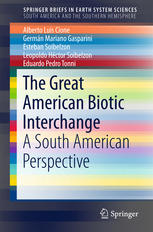

Most ebook files are in PDF format, so you can easily read them using various software such as Foxit Reader or directly on the Google Chrome browser.
Some ebook files are released by publishers in other formats such as .awz, .mobi, .epub, .fb2, etc. You may need to install specific software to read these formats on mobile/PC, such as Calibre.
Please read the tutorial at this link: https://ebookbell.com/faq
We offer FREE conversion to the popular formats you request; however, this may take some time. Therefore, right after payment, please email us, and we will try to provide the service as quickly as possible.
For some exceptional file formats or broken links (if any), please refrain from opening any disputes. Instead, email us first, and we will try to assist within a maximum of 6 hours.
EbookBell Team

5.0
30 reviewsSouth American ecosystems suffered one of the greatest biogeographical events, after the establishment of the Panamian land bridge, called the “Great American Biotic Interchange” (GABI). This refers to the exchange, in several phases, of land mammals between the Americas; this event started during the late Miocene with the appearance of the Holartic Procyonidae (Huayquerian Age) in South America and continues today. The major phases of mammalian dispersal occurred from the Latest Pliocene (Marplatan Age) to the Late Pleistocene (Lujanian Age). The most important and richest localities of Late Miocene-Holocene fossil vertebrates of South America are those of the Pampean region of Argentina. There are also several Late Miocene and Pliocene localities in western Argentina and Bolivia. Other important fossils have been collected in localities of Pleistocene age outside Argentina: Tarija (Bolivia), karstic caves of Lagoa Santa and the recently explored caves of Tocantins (Brasil), Talara (Perú), La Carolina (Ecuador), Muaco (Venezuela), and Cueva del Milodon (Chile), among others. The book discusses basic information for interpreting the GABI such as taxonomic composition (incorporating the latest revisions) at classical and new localities for each stage addressing climate, environments, and time boundaries for each stage. It includes the chronology and dynamics of the GABI, the integration of South American mammalian faunas through time, the Quaternary mammalian extinctions and the composition of recent mammalian fauna of the continent.